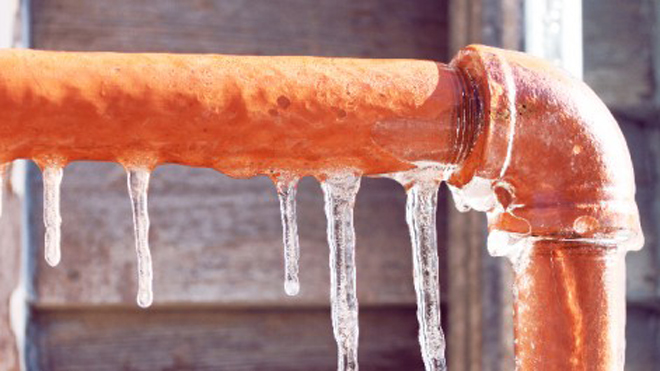How to Protect Your Plumbing from Freezing: Key Advice
How to Protect Your Plumbing from Freezing: Key Advice
Blog Article
What're your insights and beliefs on 6 Ways to Prevent Frozen Pipes?

Cold weather can wreak havoc on your pipes, specifically by freezing pipelines. Below's just how to prevent it from taking place and what to do if it does.
Introduction
As temperature levels decline, the threat of icy pipelines rises, potentially leading to expensive fixings and water damages. Understanding how to stop icy pipelines is important for house owners in chilly climates.
Comprehending Icy Pipes
What triggers pipelines to freeze?
Pipelines freeze when exposed to temperatures listed below 32 ° F (0 ° C) for prolonged periods. As water inside the pipelines freezes, it increases, taxing the pipeline wall surfaces and potentially creating them to burst.
Risks and damages
Icy pipes can cause supply of water interruptions, property damages, and costly repair work. Ruptured pipes can flooding homes and cause substantial architectural damage.
Signs of Frozen Pipeline
Determining frozen pipes early can avoid them from bursting.
Just how to recognize frozen pipes
Seek lowered water circulation from taps, uncommon smells or noises from pipes, and visible frost on exposed pipes.
Avoidance Tips
Protecting prone pipes
Wrap pipelines in insulation sleeves or make use of warm tape to safeguard them from freezing temperatures. Focus on pipes in unheated or outside locations of the home.
Home heating strategies
Maintain indoor areas sufficiently warmed, specifically areas with pipes. Open up closet doors to permit cozy air to flow around pipelines under sinks.
Safeguarding Outside Plumbing
Garden hose pipes and outdoor taps
Disconnect and drain pipes yard hose pipes prior to winter season. Mount frost-proof spigots or cover outdoor faucets with insulated caps.
What to Do If Your Pipes Freeze
Immediate actions to take
If you think frozen pipes, keep faucets open to ease pressure as the ice melts. Utilize a hairdryer or towels soaked in warm water to thaw pipelines gradually.
Long-Term Solutions
Structural adjustments
Take into consideration rerouting pipelines away from exterior wall surfaces or unheated areas. Include added insulation to attics, basements, and crawl spaces.
Updating insulation
Purchase premium insulation for pipes, attic rooms, and walls. Appropriate insulation helps keep constant temperature levels and decreases the danger of frozen pipes.
Verdict
Stopping icy pipelines calls for proactive actions and quick actions. By comprehending the reasons, signs, and preventive measures, home owners can secure their plumbing during winter.
5 Ways to Prevent Frozen Pipes
Drain Outdoor Faucets and Disconnect Hoses
First, close the shut-off valve that controls the flow of water in the pipe to your outdoor faucet. Then, head outside to disconnect and drain your hose and open the outdoor faucet to allow the water to completely drain out of the line. Turn off the faucet when done. Finally, head back to the shut-off valve and drain the remaining water inside the pipe into a bucket or container. Additionally, if you have a home irrigation system, you should consider hiring an expert to clear the system of water each year.
Insulate Pipes
One of the best and most cost-effective methods for preventing frozen water pipes is to wrap your pipes with insulation. This is especially important for areas in your home that aren’t exposed to heat, such as an attic. We suggest using foam sleeves, which can typically be found at your local hardware store.
Keep Heat Running at 65
Your pipes are located inside your walls, and the temperature there is much colder than the rest of the house. To prevent your pipes from freezing, The Insurance Information Institute suggests that you keep your home heated to at least 65 degrees, even when traveling. You may want to invest in smart devices that can keep an eye on the temperature in your home while you’re away.
Leave Water Dripping
Moving water — even a small trickle — can prevent ice from forming inside your pipes. When freezing temps are imminent, start a drip of water from all faucets that serve exposed pipes. Leaving a few faucets running will also help relieve pressure inside the pipes and help prevent a rupture if the water inside freezes.
Open Cupboard Doors
Warm your kitchen and bathroom pipes by opening cupboards and vanities. You should also leave your interior doors ajar to help warm air circulate evenly throughout your home.
.jpg)
We were introduced to that write-up on Preventing and dealing with frozen pipes from a friend on another domain. Those who appreciated our article kindly remember to share it. Bless you for being here. Come back soon.
Book Instantly Report this page